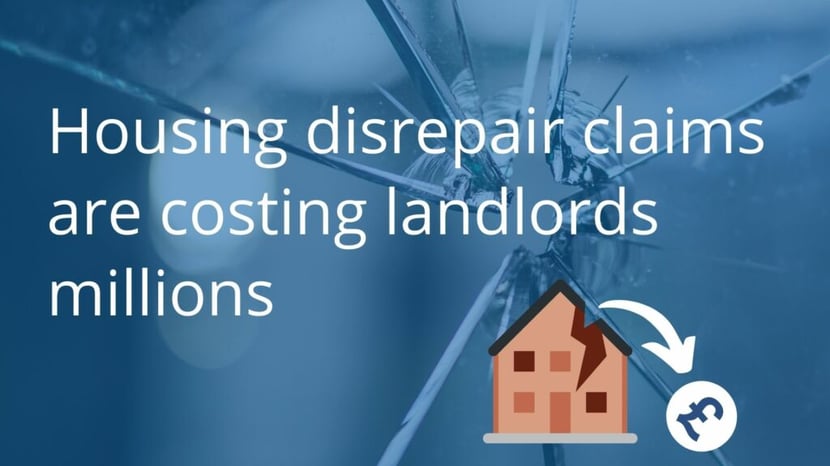
Housing disrepair costs in the millions for landlords
Housing Associations, Buildings Management companies and local councils have been targeted by ‘PPI style’ legal firms over the last two years, and the impact of landlords unable to carry out housing repairs during lockdown has only exacerbated the situation. The new legislation (Homes (Fitness for Human Habitation) Act) which came in March 2019, and was updated in 2020, has allowed tenants to go straight to the courts if reported repairs are not carried out.
The amount claimed will depend upon the severity of the deterioration of the property, and how long it was left unattended. The rent paid during that time is the basis of the compensation, and a percentage will be rewarded from that amount, this is usually between 25 and 50% of the rent of the property for that period. So, dealing with these claims quickly can really make a huge difference to the amount paid out.
Watch the on-demand webinar now>>
Housing Disrepair Compensation Example
Disrepair: Damp and mould on walls for 1 year continuously
Rent per month: £850pcm
Value of rent for the whole period of the claim (1 year): £10,200
Compensation at 25%: £2,550
One London Council saw claims against them increase by 600%, and the cost was more than £3m for a single year. Most claims were for damp and roof leaks and these claims companies are contacting tenants directly to encourage them to make a claim, knowing that the councils are often too overloaded with the backlog, or don't have the systems in place to prove otherwise, and simply pay the fines.
Similarly, Housing associations, property management companies, and even estate agents have had an increase in these claims – and therefore costs.
So how can you avoid court and these growing costs? Firstly, let’s look at when a claim is made.
A housing disrepair claim can be made if:
- A property has deteriorated or in other words, negatively changed from what it was at the time the tenant moved in
- If the landlord has been notified in writing
- The landlord has been given a reasonable time to correct the situation
- The landlord has failed to carry out such repairs to a house or flat, then the tenant can claim compensation.
Ready to speak to us? Book a meeting now>
How to avoid disrepair claims
To prevent being taken to court for these disrepairs, you need to record the report from the tenant, and a system in place that allows you to track the progress, and importantly, to keep the tenant informed of progress. Many organisations have a system for reporting in place but lose the trail soon after, and if tenants are not kept up to date, they can become frustrated and open to the idea of legal proceedings. The key to avoiding legal action is communication with your tenants and giving them trust in your organisation.
How are you handling tenant complaints?
For many housing associations, the immediate problem is handling the complaints they already have, with paperwork, documents, and digital systems all being used to work through the backlog.
The way in which you handle these tenant complaints is vital, you must allow them to identify the problem in a way that can be recorded and set in motion a workflow for acknowledgment of receipt, submission to repair, and all stages until completion.
Once you have received a disrepair claim, you must ensure that the work is undertaken as quickly and as completely as possible and all records updated and detailed carefully.
If you’re managing multiple buildings with thousands of tenants, this can be a huge task, and old systems relying on spreadsheets and disparate systems across departments will lead to errors, lost records, and ultimately a claim.
Tenant complaint workflow automation
Can your tenants report repairs easily? Do you have workflows in place to ensure they are seen, worked on, and reported? If not, how can you manage all of this?
The answer is thankfully a very simple one. Twofold has partnered with DocuWare to offer an automated capture and process workflow that does exactly this, from a self-serve portal that allows tenants to simply complete a web form, to the reporting - working as middleware with your existing applications, giving you the ability to communicate with your customers at all stages.
Take a look at the demo in this on-demand webinar to see for yourself how easy it is and give our team a call to set up a live demo of your own to make sure you can accurately keep track of repairs and prevent disrepair claims.
Want to know more? Just book a meeting with me.
Peter Kiddle
Mailroom Specialist

Watch our on-demand webinar now to see how disrepair claims can be automated
.png?width=828&height=208&name=Twofold-Logos-no%20drop%20(1).png)




